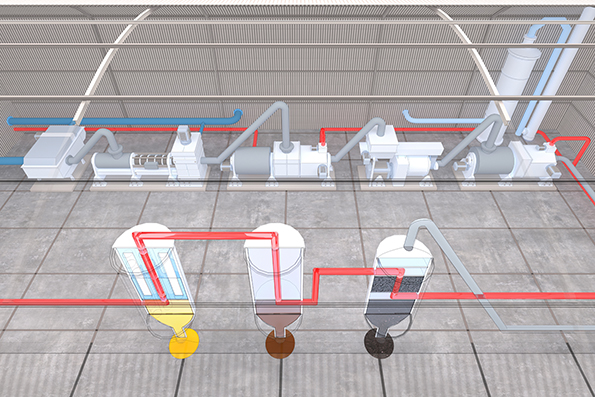Regional water authority Vallei en Veluwe will start this fall with the construction of the housing for the cellulose pilot on their treatment plant in Ede. In this hall, there will be an installation to produce four raw materials from cellulose, extracted from sewage.
The waterboard closely collaborates with their partners Cirtec from Purmerend (NL) and PulsedHeat/Setiva from Maastricht (NL).
One of the products, active carbon, can adsorb pharmaceutical and other micro pollutants from effluent. The water authority will use the pilot to address the increasing problem of micro pollutant accumulation in surface water.
Apart from active char, other valuable intermediates are produced in the process; pyrolysis gas, acids and bio-oil.
The process
The extraction and valorisation process consist of the following steps: first the cellulose is collected and separated from the sewage by the use of a screening installation. Followed by a dewatering devise to mechanically remove a large portion of the water. The third step is the ‘falling curtain dryer’ which thermally removes the surface moisture of the fibres. Afterwards the material is compressed into pellets and then dried using a deep dryer to remove the bound moisture. The last step is the actual pyrolysis and separation process which decomposes the material into the following four intermediate products:
- Bio-oil; will be sold on the market, as a ‘green’ heating oil.
- Pyrolysis gas; will be combusted to generate the thermal energy for the dryers.
- Bio-acids; used to eliminate nitrogen in another part of the sewage water treatment plant.
- Bio-char; this active char will be used to extract micropollutants like pharmaceutical residue from effluent.
Illustration on the right was created by ZN Design & Visualisation

